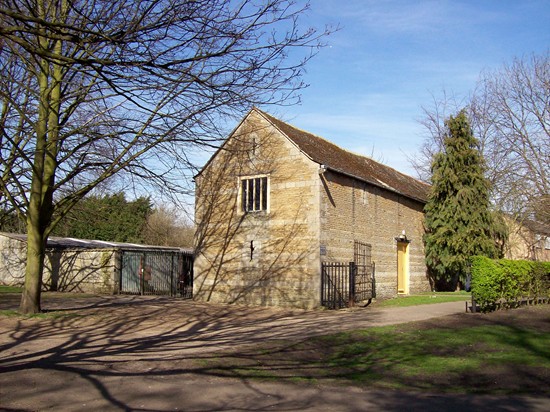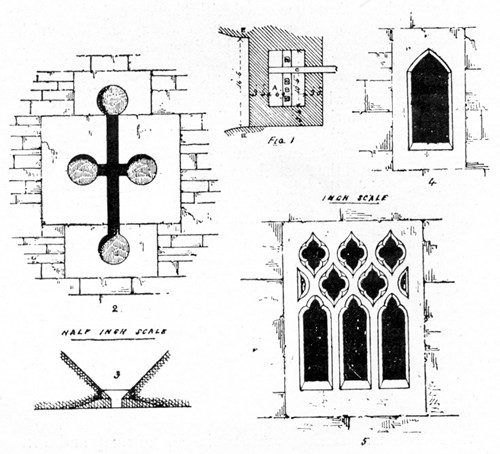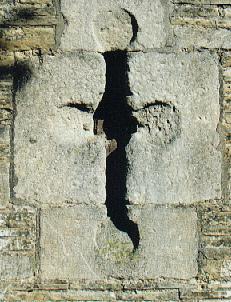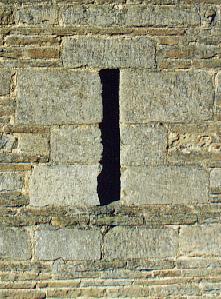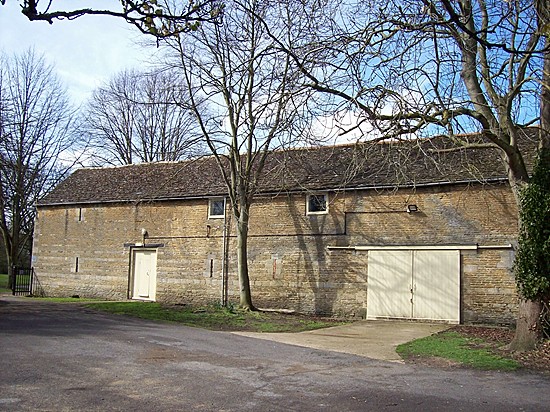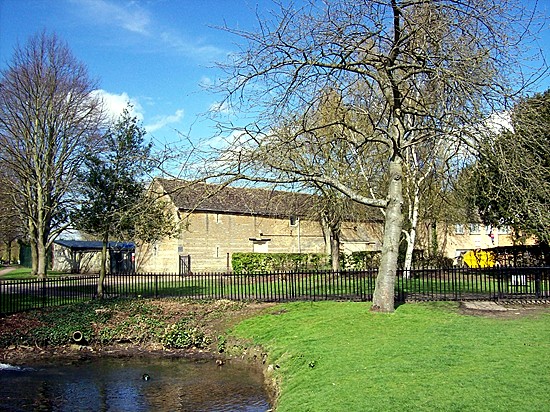|
The Shippon barn
Grassy mounds in the Wellhead Gardens are all that remain of the castle which is reputed to have stood here in past times. Tradition has it that the castle was a Saxon stronghold and birthplace of Hereward the Wake, leader of the English resistance to William the Conqueror, but there is no historical evidence for such an assumption. There is no mention of such a building in the Domesday Book of 1086
and so if a
castle did exist, it would therefore be of Norman origin. The barn stands within the Conservation Area designated in July 1977 and is Grade II listed, although the official description is cautious over the perceived provenance because it says: "Part of former farm buildings, built of dressed stone in courses with ashlar bands. Stone slate roof, red ridge tile. Wood lintel to doorway. The barn may incorporate part of the original castle buildings since there are what appear to be stone arrow slits on the south wall." An arrow slit is a thin vertical aperture in a fortification through which an archer can launch arrows, usually around two inches wide from the outside and three to nine feet deep. They did not appear in military architecture until towards the end of the 12th century when they were positioned to protect sections of the castle wall, rather than all sides of the castle, but by the 13th century it had became common for arrow slits to be placed all around a castle's defences. Neither of those which feature in the Shippon barn appears to have been built for this purpose, rather to allow air into the building. The apertures in the Shippon barn were clearly built to be functional for the care of livestock, the word shippon being derived from the old English word shippen meaning a cattle shed or cowhouse, and so a permanent means of circulating the air and allowing gases to escape would be necessary. They also compare favourably with those which can be found in other old stone barns in the area. The historian David Roffe, research fellow at the University of Sheffield, with a special interest in Bourne, also has reservations. “From what I can see of the loops from the photographs is most unconvincing“, he said. “We do not know anything about when Bourne Castle was dismantled but I suppose that stone may have been re-used because nothing was wasted and I am sure that this interpretation is right.” These features can still be seen in the Shippon
barn as it is known today that stands close to the modern footpath across the
Wellhead Gardens. During the 1930s, the building was used as a slaughterhouse
where pigs were killed for meat sold by J G Mayfield and Company, pork butchers,
with shop premises at 5 West Street, Bourne. The immediate area was also filled
with pig pens where the animals were raised, often leaving it in a muddy and
untidy state.
NOTE: The name Shippon comes from the word shippen, derived from the Old English and meaning a cattle shed or cowhouse and is mentioned by Charles Dickens in The Pickwick Papers (1836-37): "Bessy would either do fieldwork, or attend to the cows, the shippon, or churn, or make cheese." The term is still known in some parts of the country where it is used for rural hotels and houses created from barn conversions, particularly in Cheshire.
See also Bourne Castle Boy Scouts & Girl Guides
Go to: Main Index Villages Index |
|||||||||
